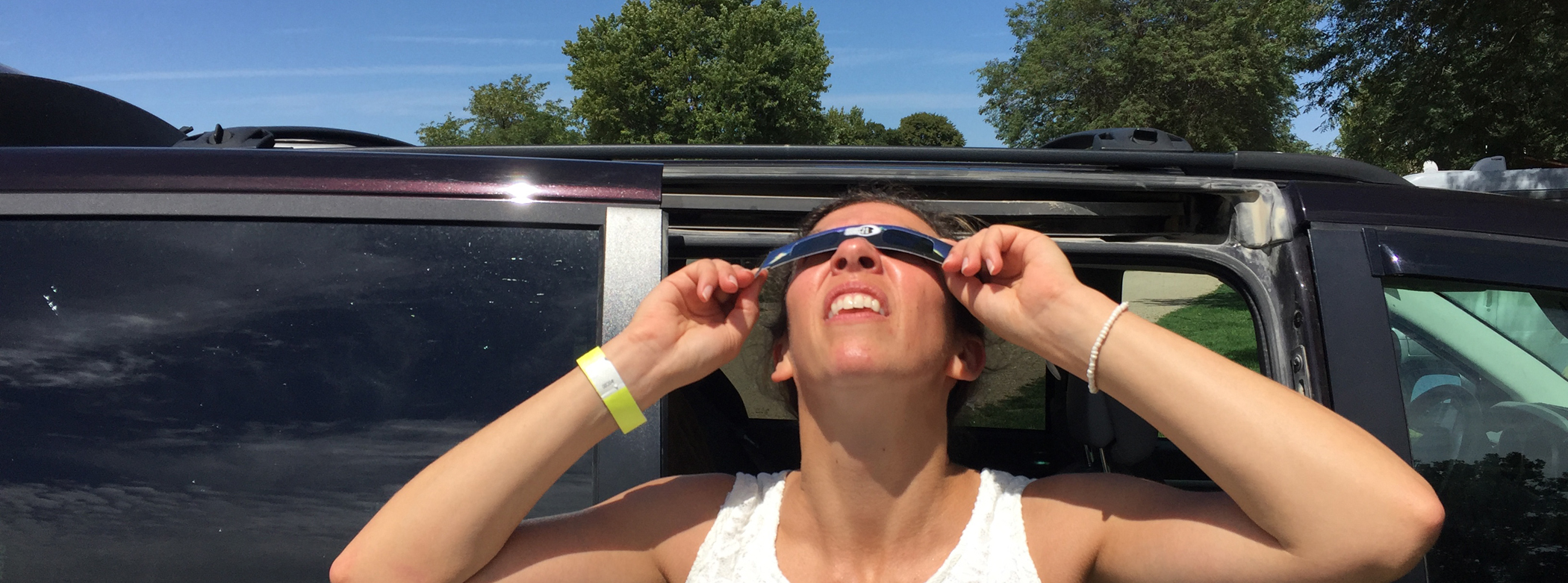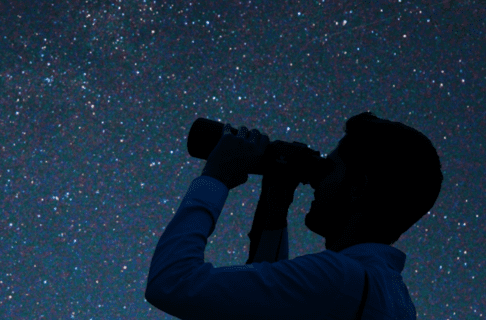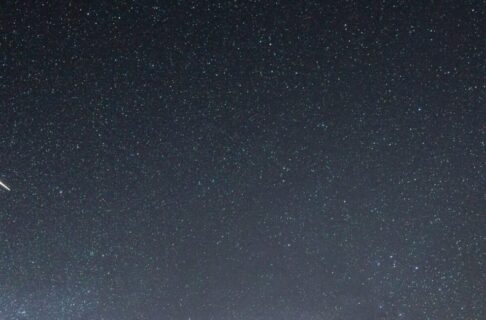Posted on: Thursday February 29, 2024
UPDATED 5 April 2024 10:08 a.m.
NOTE: The Museum is SOLD OUT of eclipse glasses, and no more can be obtained from suppliers. They are sold out all over North America. Instead, use one of the indirect methods linked below to observe the eclipse safely.
WARNING – COUNTERFEIT ECLIPSE GLASSES: There are unsafe eclipse glasses being marketed online through various online retail outlets. These counterfeit glasses are unsafe and can cause permanent eye damage or blindness. The Manitoba Museum recommends you only buy eclipse glasses from an established telescope dealer, and not from an international distributor that doesn’t specialize in astronomical equipment.
Monday, April 8, 2024: Eclipse Day!
On Monday, April 8, 2024, viewers across North America will have an amazing opportunity to experience the motions of the solar system in real time. On that afternoon a solar eclipse will be visible across the province and across the continent. For viewers in a narrow path from Mexico through the central United States and across eastern Canada, the Moon will appear to completely cover the sun, producing one of nature’s most beautiful sights: a total solar eclipse.
For most of the rest of the continent (including all of Manitoba), the eclipse is not total. The Moon will cover only a part of the Sun, resulting in a partial eclipse. This article will describe how to allow your students to view the eclipse safely and demonstrate how to turn this rare celestial event into an amazing experience for student learning. Experiencing an eclipse first-hand helps students make direct links between science as learned in class and science as it shapes the world around us.
Eclipse Viewing Events
Winnipeg
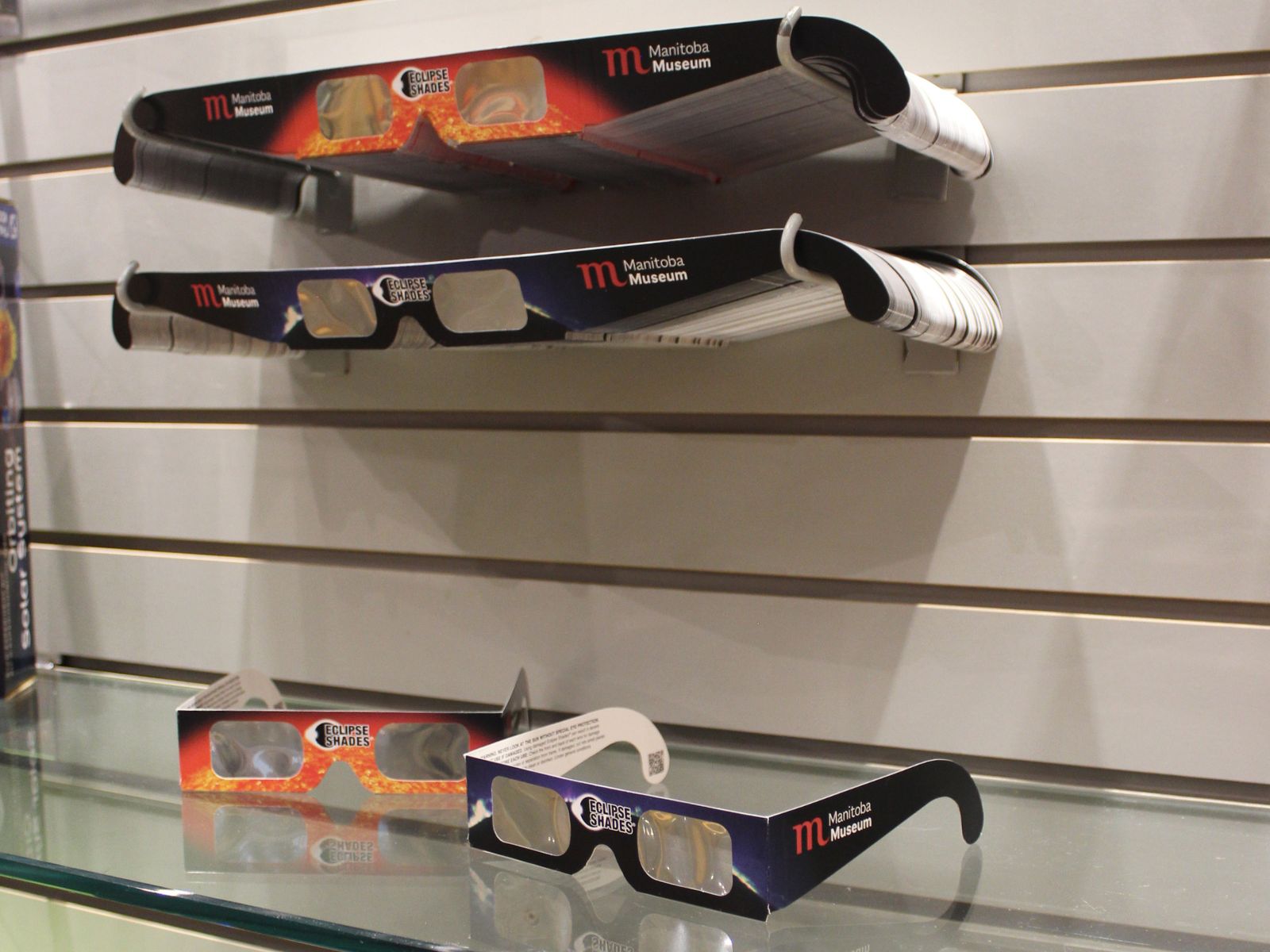
Eclipse Safety
Manitoba Association of Optometrists eclipse safety page
Observing the sun safely requires some preparation.
It is true that looking at the Sun directly with unprotected eyes can cause permanent eye damage – but this is true all the time and not just during an eclipse. The sun is no more dangerous to look at during an eclipse than it is at any other time. However, people don’t usually look at the sun repeatedly over the course of several hours on a normal day, so student safety must be considered when an eclipse occurs during school hours.
The safest way to observe the eclipse is by using special solar eclipse glasses from a certified dealer. The Manitoba Museum Shop is now SOLD OUT of eclipse glasses. Do not order them from unknown sources on the internet at this point, as unfortunately there are more fake eclipse glasses than real ones available this close to the event. Saving a dollar while risking your eyesight for the rest of your life is not worth it. If you were unable to secure glasses in time for the eclipse, check out the indirect viewing options further down on this page (instruction links are at the bottom of the page).
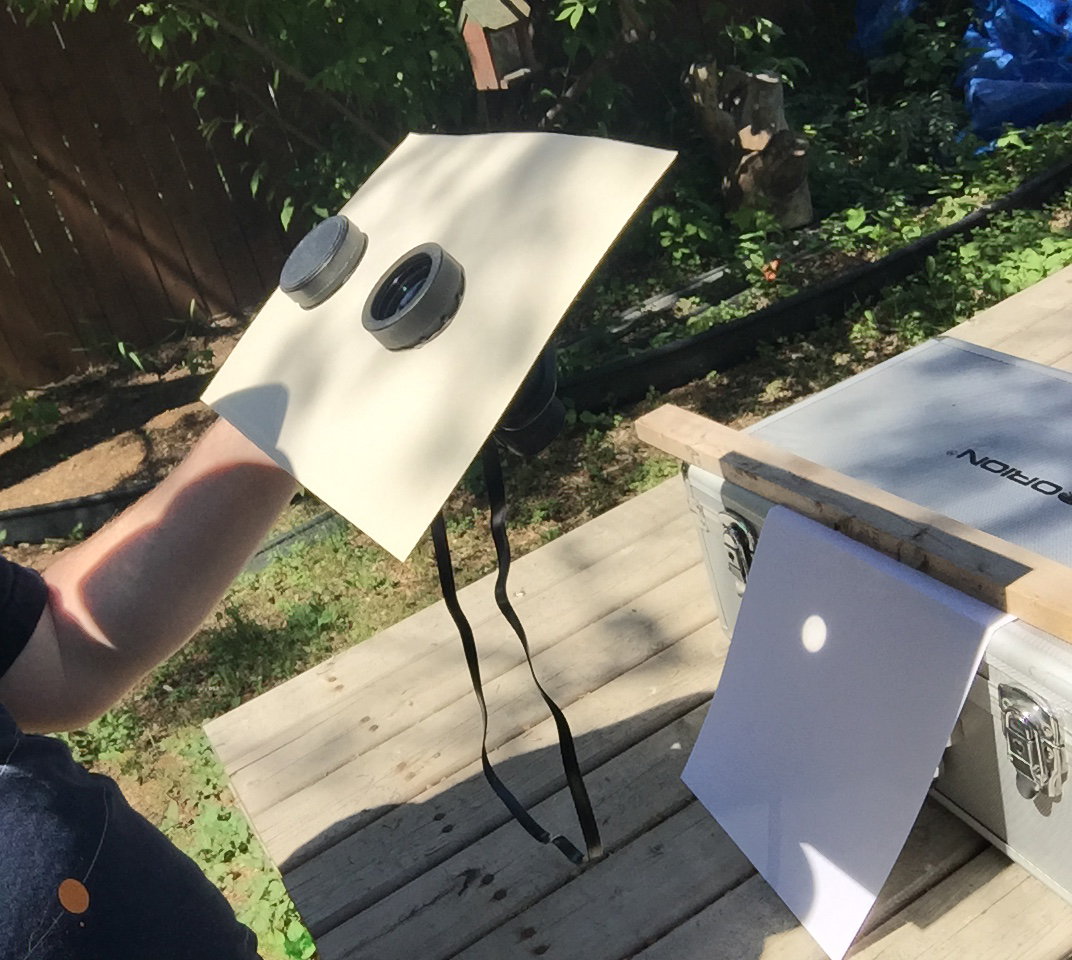
Indirect Viewing
This is the best way for a group to observe the eclipse safely but requires a little preparation. In all cases, sunlight passes through an aperture and projects an image onto the ground or a white projection screen. People do not look at the sun, but at the magnified image cast on the screen. This results in a safe view that many people can see at once.
One method or projection often suggested is to make a pinhole camera out of a cardboard box. In our experience, this does not provide a very satisfying view unless it is made with an exceptionally long box. A cardboard tube from wrapping paper with a length of about a meter is a good choice for this.
Build a pinhole camera (bilingual instructions):https://www.asc-csa.gc.ca/eng/youth-educators/activities/fun-experiments/eclipse-projector.asp
One of the best overall viewing methods for a class is to construct a binocular eclipse projector. This will show a large image of the Sun that can be viewed by several people at the same time and is completely safe for the viewer. (However, it may not be completely safe for the binoculars, depending on their design… do not use expensive binoculars for this!)
Binocular Eclipse Projector (PDF file): Binocular-Solar-Projector

Direct Viewing
For direct viewing, the special solar filter is placed between the eye and the Sun, and the observer looks at the Sun through the filter.
There are only two types of safe filters for direct solar viewing. First are certified eclipse glasses, as mentioned above. The other safe filter is a piece of #14 welder’s glass (and ONLY #14). Both of these materials filter not only the visible light, but also the harmful and invisible infrared and ultraviolet rays that can cause permanent eye damage.
NOT SAFE FOR DIRECT SOLAR VIEWING: most eclipse glasses bought off the internet (there are MANY scammers selling fake eclipse glasses); sunglasses; CDs or DVDs; Mylar (silver) balloons or wrapping paper; any kind of photographic film; smoked glass; any other filter material you read about online that isn’t #14 welder’s glass or a pair of certified eclipse glasses.
ARE CLOUDS A SAFE FILTER? If the sky is cloudy, sometimes it is possible to see the Sun through the clouds without it feeling overly bright. While this dims the visible light from the Sun, it may not block the harmful infrared and ultraviolet light and is not a safe method to observe. Of course, if the clouds are too thick, we will not be able to see the Sun at all except via live stream.
WHAT ABOUT TELESCOPES AND BINOCULARS? If you have access to a telescope or binoculars, you cannot use eclipse glasses or welder’s glass with them. You need a special solar filter that fits over the front of the telescope lense, filtering the light before it enters the telescope. It is probably too late to try and get one of these now, as they have been selling out for months. If you already have one of these, you can use it to view the eclipse safely, but it is essential to make sure the filter cannot be removed from the front of the telescope by wind or curious hands. (Duct tape is your friend.) If you are unsure about the safety of the gear you have, email us at space@manitobamuseum.ca and we can advise you. If in doubt, do not risk it and find another way to observe the eclipse.
Links
MANITOBA ECLIPSE LIVESTREAM LINKS: https://Youtube.com/ManitobaMuseum https://facebook.com/ManitobaMuseum
Eclipse times and circumstances for every town in Manitoba: https://eclipse2024.org/eclipse_cities/states.php?type=partial&state=Manitoba&country=Canada
NASA’s 2024 eclipse page: https://science.nasa.gov/eclipses/future-eclipses/eclipse-2024/
Build a pinhole camera (bilingual instructions):https://www.asc-csa.gc.ca/eng/youth-educators/activities/fun-experiments/eclipse-projector.asp
Binocular Eclipse Projector (PDF file): Binocular-Solar-Projector




